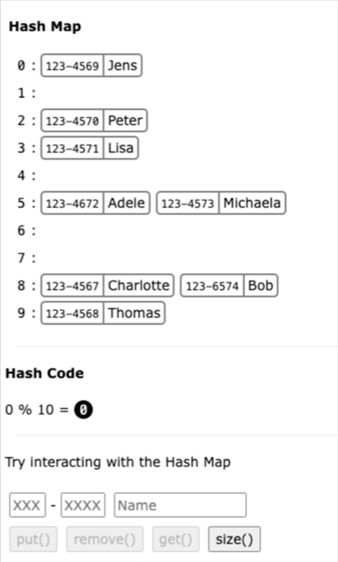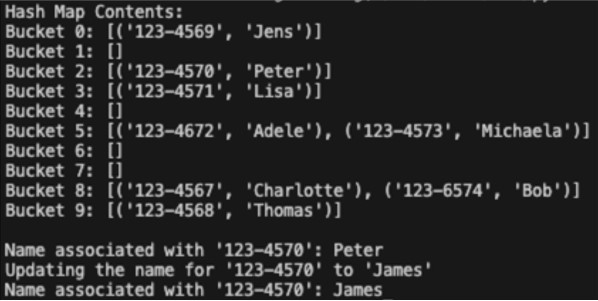Hash Maps are used to find detailed information about something. In the implementation below, people are stored in a Hash Map. A person can be looked up using a person’s unique social security number (the Hash Map key), and then we can see that person’s name (the Hash Map value).

Output:

It is easier to understand how Hash Maps work if you first have a look at the two previous pages about Hash Tables and Hash Sets. It is also important to understand the meaning of the words below.
- Entry: Consists of a key and a value, forming a key-value pair.
- Key: Unique for each entry in the Hash Map. Used to generate a hash code determining the entry's bucket in the Hash Map. This ensures that every entry can be efficiently located.
- Hash Code: A number generated from an entry's key, to determine what bucket that Hash Map entry belongs to.
- Bucket: A Hash Map consists of many such buckets, or containers, to store entries.
- Value: Can be nearly any kind of information, like name, birth date, and address of a person. The value can be many different kinds of information combined.